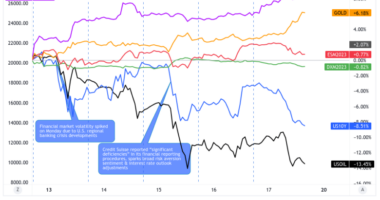The USD-INR remained volatile and crept higher during the week due to a persistent rally in crude oil as well as coal resulting in global inflation fears. Oil prices climbed to a multi-year high after OPEC+ allies decided to stick to its July month’s decision of adding not more than 400,000 barrels a month until April 2022. The market had anticipated that the group would increase production capacity further amid the energy crisis and hence the decision came in as a rude shock which could push crude prices to $90- $100 per barrel soon.
On the domestic front, the RBI’s MPC decided to keep the repo rate unchanged for an eighth consecutive time at 4% and continued its accommodative stance. RBI also announced that it will discontinue the Government Securities Acquisition programme aimed at containing bond yields which can be considered as the initial step towards the normalisation of the excess liquidity conditions.
During the week, the US dollar index did pull back from the recent high of 94.50 but kept deriving benefit from the risk-off mode in the market due to issues related to the energy crisis, especially in Europe along with fears of a slowdown in the Chinese economy. Additionally, it is now more evident that the issue in China is not isolated to the Evergrande group; cracks have started to emerge in the Chinese property bonds with the recent default of luxury developer Fantasia Holdings Group when it failed to repay $206 million recently. While the US Nonfarm payrolls data showed that job additions at 194,000 during the previous month was much lower than the expected number of 450,000, the DXY still remained underpinned at the 94 mark given the recent tone of the Fed on tapering.
The noise about a correction in the global equity market has become louder post the indication about a move towards policy normalization by the FOMC in its last monetary policy meeting. In addition, the energy crisis and subsequent rise in oil prices amid recovery from the pandemic, China’s relentless clampdown on Industries, has kept the equity investors on the edge across the globe. India’s very own semiconductor and coal shortfall aren’t helping the cause of domestic equities either. There were only 3 days of coal reserve left as per the latest update, this shortage could be severe as India produces 70 per cent of its electricity from coal and could lead to power outages in many states. Global central banks preparing the ground for withdrawal of liquidity support announced during the Covid crisis at a time when the world is undergoing supply-demand mismatch has led to increased worries among equity investors. Owing to the several factors mentioned above the probability of a decent correction in Indian and global equities seems likely.
Historically, Indian equities like most markets have followed a similar theme since 2000. They tend to fall severely during a major crisis be it domestic or global, this is then followed by an even stronger and sustainable post-crisis rally, sometimes even without any fundamentals but due to the availability of easy money provided for recovery from the crisis. The markets then become over- expensive leading to exorbitant valuations before finally correcting themselves to their real value which is often also referred to as mean reversion. The below chart shows a decline in Nifty and a corresponding fall in the Indian Rupee due to the outflow of US dollars by overseas investors during such a phase.

* While the tenure of the UPA government was never a real crisis, it has been taken as a data point given the unenthusiastic sentiments then and the positivity and euphoria created post change of government.
For instance, the Nifty had corrected by 28% between November 10 and December 2011 after a post Subprime crisis rally of about 150% between Oct 2008 and Nov 2010, during the same period the Indian Rupee had weakened by about 21.50%. Looking at a more recent event that was domestic, the nifty corrected by about 11.45% post the ILFS crisis after rallying by 48%, at the same time the rupee declined by 5%. While the fall in the Indian Rupee has been of varying intensity if all the six events are considered but if only the last three events are considered we do find some consistency in the numbers. The Nifty has corrected between 10-12% (with a mean of 11.09%); while the Indian Rupee has declined between 2.5-4.5% (with a mean of 3.54%). Going by this pattern and in view of the way the markets are again tepidly poised at present after the most recent rally amid recovery from the Covid-19 crisis, the Nifty (Friday closing:17895) may be pulled down towards 15950 which can subsequently push the Rupee (Friday closing:74.98) towards the 77.65 mark.

In the near term, keeping in mind the above risk factors that can lead to a correction in equity markets in conjunction with the rising US dollar index, we can expect choppy movement in the USD-INR pair between 74.60 and 75.50 with an upward bias this week. Even going further into the future as illustrated above, equities and hence the Indian Rupee can remain under pressure. As Mark Twain had once famously said “History Doesn’t Repeat Itself, but It Often Rhymes” – will it this time? Let us all wait and watch!
(Ritesh Bhansali and Imran Kazi are both VPs at Mecklai Financial. Views are their own)








